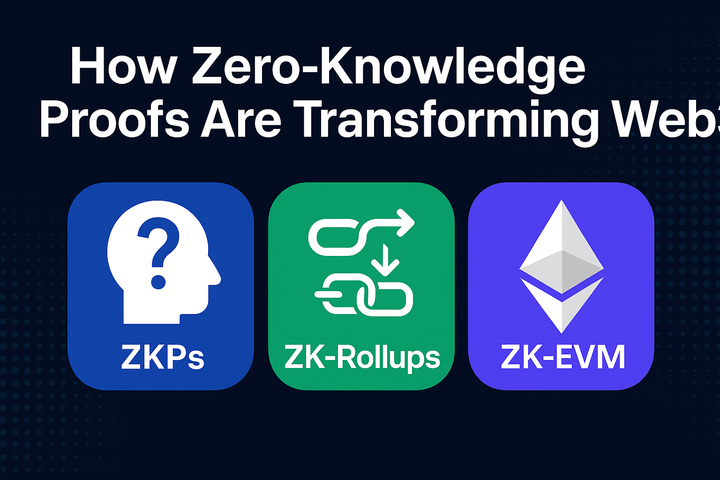Cross-Chain Governance Wars: Are Governance Tokens Still Chain-Dependent?

Introduction
The rise of decentralized finance (DeFi) and blockchain technology has led to the emergence of governance tokens, which empower holders to participate in decision-making processes within decentralized protocols. However, as the blockchain ecosystem evolves, a new phenomenon has emerged: cross-chain governance. This article explores the implications of cross-chain governance, examining whether governance tokens are still chain-dependent in a world where protocols launch governance on one chain while operating liquidity on another. We will delve into the mechanics of governance tokens, the challenges of cross-chain governance, and the future of decentralized decision-making.
1. Understanding Governance Tokens
1.1 What are Governance Tokens?
Governance tokens are digital assets that grant holders the right to participate in the governance of a decentralized protocol. These tokens enable users to vote on proposals, changes to the protocol, and other important decisions. Governance tokens are typically issued by decentralized autonomous organizations (DAOs) and play a crucial role in the decentralized finance ecosystem.
1.2 Key Features of Governance Tokens
- Voting Rights: Holders of governance tokens can vote on proposals that affect the protocol, such as changes to the protocol's parameters, fee structures, or the allocation of funds.
- Incentives: Governance tokens often come with incentives, such as staking rewards or access to exclusive features within the protocol.
- Decentralization: Governance tokens promote decentralization by allowing a diverse group of stakeholders to participate in decision-making processes, reducing the influence of centralized entities.
1.3 Examples of Governance Tokens
- Uniswap (UNI): The governance token for the Uniswap decentralized exchange, allowing holders to vote on protocol upgrades and changes.
- Compound (COMP): The governance token for the Compound lending protocol, enabling users to propose and vote on changes to the protocol's governance.
- Aave (AAVE): The governance token for the Aave lending platform, granting holders the ability to influence the direction of the protocol.
2. The Emergence of Cross-Chain Governance
2.1 What is Cross-Chain Governance?
Cross-chain governance refers to the ability of a protocol to operate governance mechanisms across multiple blockchains. This allows protocols to leverage the strengths of different chains while maintaining a unified governance structure. Cross-chain governance is becoming increasingly relevant as the blockchain ecosystem expands, with various chains offering unique features, scalability, and user bases.
2.2 The Need for Cross-Chain Governance
- Interoperability: As the blockchain ecosystem grows, the need for interoperability between different chains becomes essential. Cross-chain governance allows protocols to interact with multiple blockchains, enhancing their functionality and reach.
- Liquidity Optimization: By operating liquidity on one chain while launching governance on another, protocols can optimize their liquidity pools and attract users from different ecosystems.
- Decentralized Decision-Making: Cross-chain governance enables a more decentralized approach to decision-making, allowing stakeholders from various chains to participate in governance processes.
2.3 Examples of Cross-Chain Governance Protocols
- Terra: The Terra blockchain has implemented cross-chain governance by allowing users to participate in governance decisions on the Terra chain while utilizing liquidity from other chains, such as Ethereum.
- Cosmos: The Cosmos ecosystem enables cross-chain governance through its Inter-Blockchain Communication (IBC) protocol, allowing different blockchains to communicate and share governance mechanisms.
- Polkadot: Polkadot's unique architecture allows for cross-chain governance through its parachain model, where different blockchains can operate independently while sharing governance structures.
3. The Mechanics of Cross-Chain Governance
3.1 How Cross-Chain Governance Works
Cross-chain governance involves several key components:
- Interoperability Protocols: Protocols like IBC (Inter-Blockchain Communication) and bridges facilitate communication between different blockchains, enabling cross-chain governance.
- Unified Governance Framework: A unified governance framework allows protocols to establish governance rules that apply across multiple chains. This framework ensures that all stakeholders, regardless of the chain they are on, can participate in governance.
- Tokenomics: Cross-chain governance often involves the use of governance tokens that can be utilized across different chains. These tokens may be wrapped or bridged to enable their use on multiple platforms.
3.2 The Role of Bridges in Cross-Chain Governance
Bridges play a crucial role in enabling cross-chain governance by allowing assets and information to flow between different blockchains. They facilitate the transfer of governance tokens, enabling users to participate in governance processes regardless of the chain they are on.
- Wrapped Tokens: Wrapped tokens are representations of assets from one blockchain on another. For example, Wrapped Bitcoin (WBTC) allows Bitcoin holders to use their assets on the Ethereum blockchain, enabling participation in DeFi protocols.
- Cross-Chain Voting: Some protocols implement cross-chain voting mechanisms, allowing users to vote on proposals from different chains. This ensures that governance decisions reflect the interests of stakeholders across the ecosystem.
- Liquidity Pools: Cross-chain governance can optimize liquidity pools by allowing protocols to aggregate liquidity from multiple chains. This enhances the efficiency of capital allocation and improves user experience.
4. Challenges of Cross-Chain Governance
1. Complexity and Fragmentation
One of the primary challenges of cross-chain governance is the complexity and fragmentation of the ecosystem. With multiple blockchains and governance structures, it can be challenging to establish a unified governance framework that accommodates the diverse needs of stakeholders.
- Diverse Governance Models: Different blockchains may have varying governance models, making it difficult to create a cohesive governance structure that works across all chains.
- Coordination Challenges: Coordinating governance decisions across multiple chains can be cumbersome, leading to delays and inefficiencies in the decision-making process.
2. Security Risks
Cross-chain governance introduces additional security risks, as vulnerabilities in one chain can potentially impact the entire governance structure. Ensuring the security of bridges and interoperability protocols is crucial to maintaining the integrity of cross-chain governance.
- Bridge Vulnerabilities: Bridges are often targeted by attackers seeking to exploit vulnerabilities. A successful attack on a bridge can lead to the loss of assets and undermine trust in the cross-chain governance model.
- Smart Contract Risks: Smart contracts governing cross-chain interactions must be thoroughly audited to prevent exploits and ensure the security of governance processes.
3. Regulatory Considerations
As cross-chain governance gains traction, regulatory scrutiny is likely to increase. Protocols must navigate the evolving regulatory landscape to ensure compliance with local laws and regulations.
- Jurisdictional Challenges: Different jurisdictions may have varying regulations regarding governance tokens and decentralized protocols. Navigating these complexities can be challenging for cross-chain governance models.
- Tax Implications: The use of governance tokens across multiple chains may have tax implications for users, requiring protocols to provide clear guidance on compliance.
5. Are Governance Tokens Still Chain-Dependent?
5.1 The Shift Towards Cross-Chain Governance
As protocols increasingly adopt cross-chain governance models, the question arises: are governance tokens still chain-dependent? The answer is nuanced, as the evolution of governance tokens reflects the changing dynamics of the blockchain ecosystem.
- Increased Interoperability: The rise of cross-chain governance indicates a shift towards greater interoperability, where governance tokens can be utilized across multiple chains. This reduces the dependence on a single chain for governance participation.
- Unified Governance Frameworks: Protocols that implement unified governance frameworks can create a more cohesive governance structure, allowing stakeholders from different chains to participate in decision-making processes.
- Token Utility Across Chains: As governance tokens become more versatile, their utility across different chains may diminish the notion of chain-dependence. Users may find value in holding governance tokens that can be used in various ecosystems.
5.2 The Future of Governance Tokens
The future of governance tokens is likely to be characterized by increased flexibility and adaptability. As cross-chain governance continues to evolve, we can expect to see:
- Multi-Chain Governance Tokens: Protocols may issue governance tokens that are explicitly designed for cross-chain use, allowing holders to participate in governance across multiple chains seamlessly.
- Dynamic Governance Models: Governance models may become more dynamic, allowing protocols to adapt their governance structures based on user feedback and changing market conditions.
- Enhanced User Engagement: Cross-chain governance may lead to increased user engagement, as stakeholders from different chains can collaborate and influence the direction of protocols collectively.
6. Case Studies of Cross-Chain Governance
1. Terra and Ethereum
The Terra blockchain has implemented cross-chain governance by allowing users to participate in governance decisions on the Terra chain while utilizing liquidity from Ethereum. This approach enables Terra to leverage the liquidity and user base of Ethereum while maintaining its governance structure.
- Governance Token: LUNA is the governance token for the Terra ecosystem, allowing holders to vote on proposals and changes to the protocol.
- Liquidity Pools: Terra has established liquidity pools on Ethereum, enabling users to access liquidity while participating in governance on the Terra chain.
2. Cosmos and IBC
Cosmos is a leading example of cross-chain governance through its Inter-Blockchain Communication (IBC) protocol. IBC allows different blockchains within the Cosmos ecosystem to communicate and share governance mechanisms.
- Governance Token: ATOM is the governance token for the Cosmos network, granting holders the ability to influence the direction of the ecosystem.
- Cross-Chain Voting: Cosmos enables cross-chain voting, allowing users to participate in governance decisions across multiple blockchains within the ecosystem.
3. Polkadot and Parachains
Polkadot's unique architecture allows for cross-chain governance through its parachain model. Parachains can operate independently while sharing governance structures, enabling a more cohesive governance framework.
- Governance Token: DOT is the governance token for the Polkadot network, allowing holders to vote on proposals and changes to the protocol.
- Shared Governance: Parachains can leverage the governance mechanisms of the Polkadot relay chain, enabling a unified governance structure across multiple chains.
7. The Future of Cross-Chain Governance
1. Trends to Watch
As cross-chain governance continues to evolve, several trends are likely to shape its future:
- Increased Adoption of Cross-Chain Protocols: As more protocols adopt cross-chain governance models, we can expect to see increased adoption of interoperability protocols and bridges.
- Enhanced User Experience: Protocols will focus on improving the user experience for governance participation, making it easier for users to engage in decision-making processes.
- Collaboration Between Protocols: Cross-chain governance may lead to increased collaboration between protocols, fostering a more interconnected DeFi ecosystem.
Conclusion
Cross-chain governance represents a significant evolution in the governance of decentralized protocols. As protocols launch governance on one chain while operating liquidity on another, the notion of governance tokens being chain-dependent is being challenged. The rise of cross-chain governance highlights the importance of interoperability, liquidity optimization, and decentralized decision-making in the blockchain ecosystem.
As the landscape continues to evolve, governance tokens are likely to become more versatile, enabling users to participate in governance across multiple chains. The future of cross-chain governance holds immense potential for enhancing user engagement, fostering collaboration, and driving innovation in the decentralized finance space.



Comments ()